project 52:6 {life}
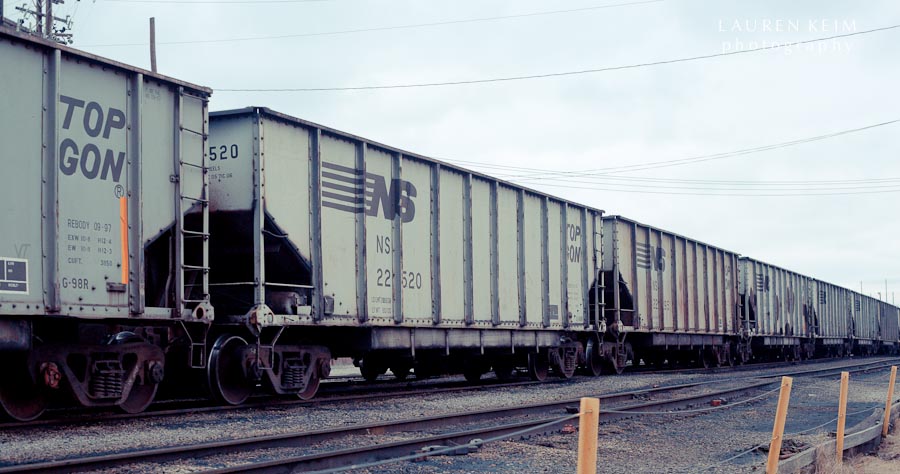 We live down the street from a Norfolk Southern coal pier. We're not in coal mining country, but we are certainly in the heart of coal-transporting country. When we snuck down last weekend to take these photos (Neel came with me to get his own close up of the trains), the cars weren't full of coal, but oftentimes they are.
We live down the street from a Norfolk Southern coal pier. We're not in coal mining country, but we are certainly in the heart of coal-transporting country. When we snuck down last weekend to take these photos (Neel came with me to get his own close up of the trains), the cars weren't full of coal, but oftentimes they are.
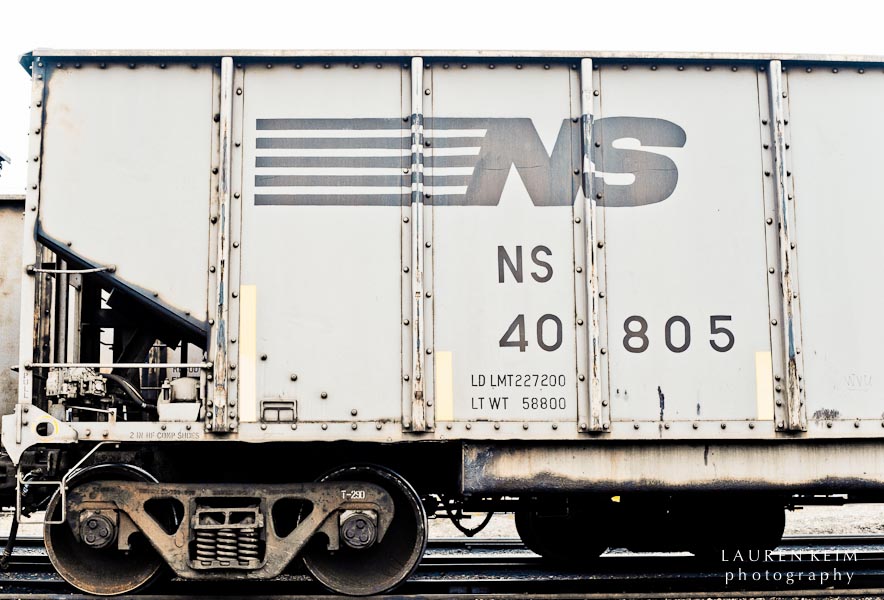 We are regularly stopped by trains on our school commute (thankfully, it's usually on the way home and not when we're rushing to get there!), and the solid thump of the coal being dumped from the cars into vessels to ship is a sound that makes a familiar backdrop to our everyday lives (This house is also the dustiest I've ever lived in, and I don't think it's entirely from the three dogs!).
We are regularly stopped by trains on our school commute (thankfully, it's usually on the way home and not when we're rushing to get there!), and the solid thump of the coal being dumped from the cars into vessels to ship is a sound that makes a familiar backdrop to our everyday lives (This house is also the dustiest I've ever lived in, and I don't think it's entirely from the three dogs!).
Our proximity to the coal yards takes on a personal note from me. My great grandfather (my mom's granddad) was a coal miner, and her father worked at the mines, although he was not actually a miner himself. When I knew I wanted to do my Cultre project on our neighboring coal yards, I asked my mom for some of the details of her family's life in connection to the mines. Her grandfather quit school at 13 and lied about his age to get a job in the coal mines. He was a deep underground miner (as opposed to a surface miner) and wanted to work there to save money and become self-supporting. This was in southern Illinois whch is deep coal mining country. Apparently my great-grandfather and another man tried to open a coal-mining company, but the prohibative piece was paying for insurance for the miners. My great-grandfather also did some work with a man named John L. Lewis (you can read more about Lewis here) as a labor organizer toward the formation of the United Mine Workers of America (as well as the United Steelworkers of America and the AFLCIO).
My mother's grandfather eventually bought some land and left mining to open a dairy farm which was still in operation when my mom was growing up. Even though he'd left the mines, his life underground had a lasting legacy. He developed Black Lung Diesase (now called coal workers' pneumoconiosis) and died of a lung hemmorhage when my mom was 15.
Here are my grandparents. 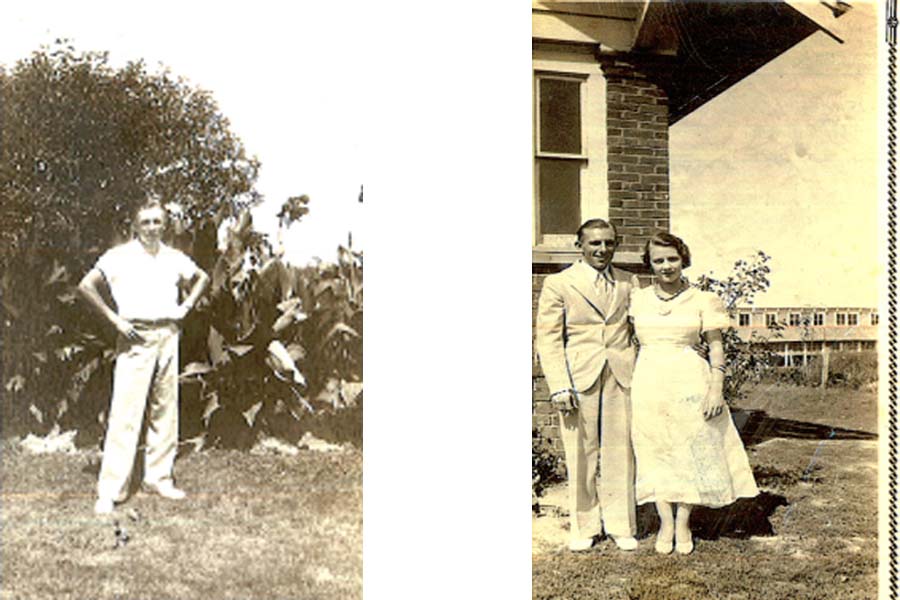 Grandpa Fred and my Grandma Mercedes. My grandfather never worked in the deep mines. Instead he had various jobs near the strip mines in the city where my mom grew up. His main job was helping with the bush-hogging. Operating a heavy piece of equipment that moved surface earth to allow the big shovels to get to the coal. My mom recounts how the mining life was a pervasive one for her family. Miners worked in shifts, so that my granddad would work days (7AM-3PM) for two weeks, second shift (3PM-11PM) for two weeks and nights (11PM-7AM) for two weeks. This was hard on their family (my grandmother, my aunt and mom). My mom learned to make his breakfast (bacon, over easy eggs and pancakes every morning) and his lunch (two white bread sandwiches, an orange and a thermos of coffee. If he was on second and third shift, they had to be very quiet so as not to wake him. Meals came at odd hours, and there was always a mountain of a working man's laundry to be done. It's worth noting that for many years that laundry was done without the assistance of an automatic washer and dryer. Occasionally he'd get laid off and try to find work elsewhere, but he'd eventually get called back to the mines when work picked up.
Grandpa Fred and my Grandma Mercedes. My grandfather never worked in the deep mines. Instead he had various jobs near the strip mines in the city where my mom grew up. His main job was helping with the bush-hogging. Operating a heavy piece of equipment that moved surface earth to allow the big shovels to get to the coal. My mom recounts how the mining life was a pervasive one for her family. Miners worked in shifts, so that my granddad would work days (7AM-3PM) for two weeks, second shift (3PM-11PM) for two weeks and nights (11PM-7AM) for two weeks. This was hard on their family (my grandmother, my aunt and mom). My mom learned to make his breakfast (bacon, over easy eggs and pancakes every morning) and his lunch (two white bread sandwiches, an orange and a thermos of coffee. If he was on second and third shift, they had to be very quiet so as not to wake him. Meals came at odd hours, and there was always a mountain of a working man's laundry to be done. It's worth noting that for many years that laundry was done without the assistance of an automatic washer and dryer. Occasionally he'd get laid off and try to find work elsewhere, but he'd eventually get called back to the mines when work picked up.
My grandfather became disabled with rheumatoid arthritis when my mom was in college. (Is that timing right, Mom?) As I remember the stories, he was crippled literally overnight. He was not well, but mobile when the family took a car trip, and by the time he got out of the car he couldn't walk. (Again you may need to assist me here, Mom!) He was just shy the 20 years he needed for his pension, but either the local or national UMW worked things out so he could receive his pension anyway. As you can imagine, my family is very grateful to the UMW. The healthcare coverage was key. (As an aside, when it was clear that my granddad couldn't work anymore, my grandmother opened a children's clothing store in their home called the Weathervane Shop to provide for her family. I'm always so amazed at her industriousness, and that store kept me in gorgeous clothes for a lot of my childhood. I'm convinced that my love of clothes stems from that experience!)
My mom recalls going to the mines a few times, once when she was small to pick her dad up mid-shift because of a strike. In southern Illinois especially, there was always concern about violence associated with the strikes.
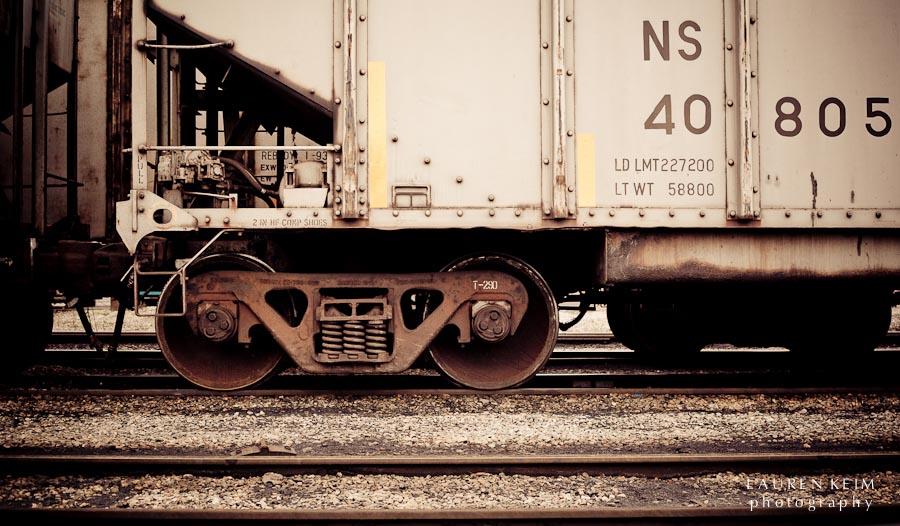 My mom wrote, What I remember most is that everything was some shade of black. Even dad, who would have coal dust all over him. I have a very fixed memory of seeing him like that and how incredibly blue his eyes were because of the way the coal dust covered the rest of him.
My mom wrote, What I remember most is that everything was some shade of black. Even dad, who would have coal dust all over him. I have a very fixed memory of seeing him like that and how incredibly blue his eyes were because of the way the coal dust covered the rest of him.
So you see, there's a satisfaction for me, living near these coal yards. In their connection to my past. Grandpa Fred died when I was only two, and I have no memories of him. But we're connected. Through my mom, of course, but also our migraine headaches (she doesn't ever remember him coming home sick from work despite suffering excruciating pain from the headaches). And now in the way the coal is connected to us here.
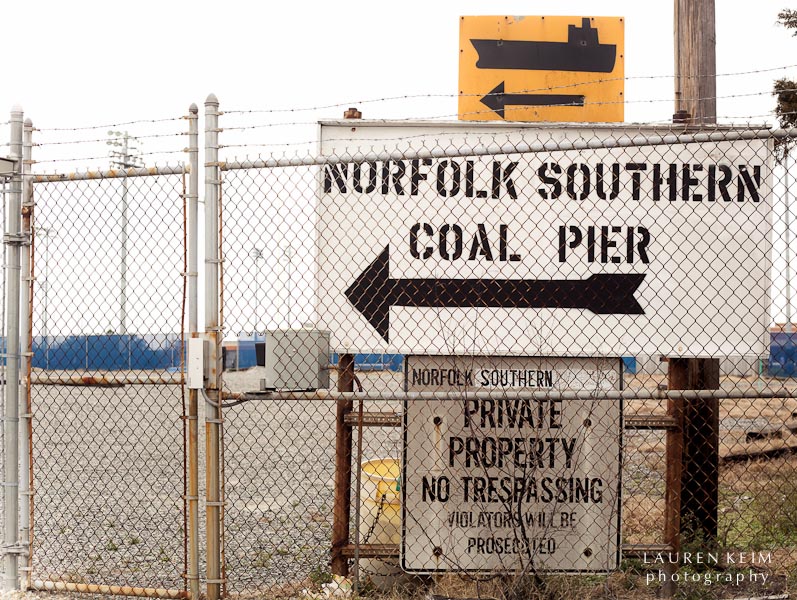 So I checked on the Norfolk Southern site, and the coal yards at the end of our street have an annual "throughput capacity" of 48 million tons and a dumping capacity of up to 8,000 tons an hour.
So I checked on the Norfolk Southern site, and the coal yards at the end of our street have an annual "throughput capacity" of 48 million tons and a dumping capacity of up to 8,000 tons an hour.
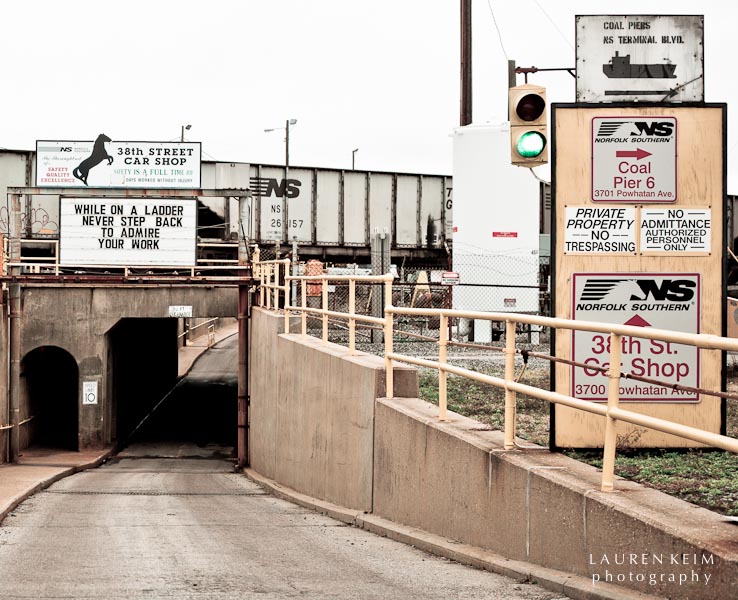 This view is at the end of a street we routinely take to turn down our own. During hurricanes or Nor'easters, that tunnel will often flood, reminding us that coal is connected to shipping and that the terminal is (as needs be) right on the water. I love the signs they have over that underpass. Every few weeks it's something new, often a safety reminder or a proud proclamation of how many accident-free days they've had. I've long been wanting to start photographing those signs. It feels good to have started.
This view is at the end of a street we routinely take to turn down our own. During hurricanes or Nor'easters, that tunnel will often flood, reminding us that coal is connected to shipping and that the terminal is (as needs be) right on the water. I love the signs they have over that underpass. Every few weeks it's something new, often a safety reminder or a proud proclamation of how many accident-free days they've had. I've long been wanting to start photographing those signs. It feels good to have started.
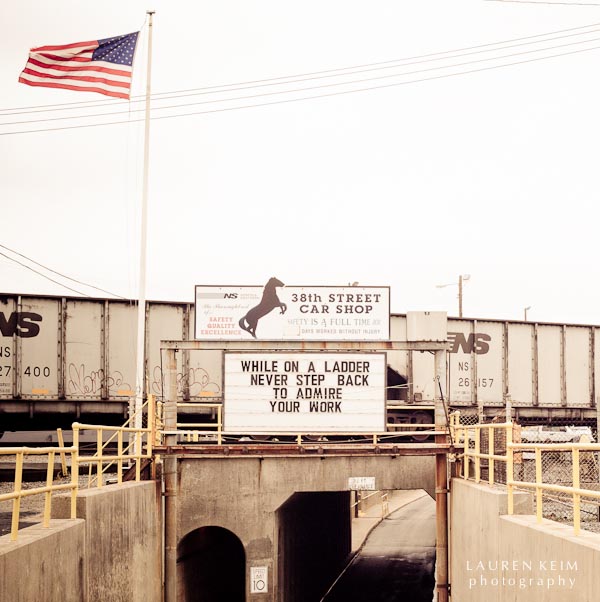 The trains that run near our house, miles and miles of track in and around these coal yards, are another part of our culture. My dad and Neel love model trains, and now they're passing that love onto Callum. And you know he has some Norfolk Southern cars! And that's it. A deep, historic part of our culture. I can't hear those late night coal dumps without thinking of my grandfather. And thinking how he walked to the mine the way dozens of men and women do now, just down the street from me. The thud of those cars and the carg they carry is part of the heartbeat of our lives.
The trains that run near our house, miles and miles of track in and around these coal yards, are another part of our culture. My dad and Neel love model trains, and now they're passing that love onto Callum. And you know he has some Norfolk Southern cars! And that's it. A deep, historic part of our culture. I can't hear those late night coal dumps without thinking of my grandfather. And thinking how he walked to the mine the way dozens of men and women do now, just down the street from me. The thud of those cars and the carg they carry is part of the heartbeat of our lives.
